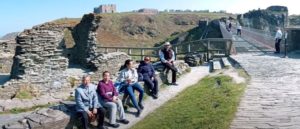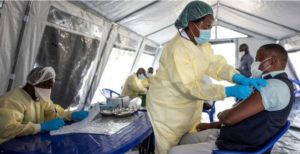Family Holidays in Asia Pacific
Findings from the inaugural Asia Pacific Family Travel 2012 survey indicate that families on vacation are prepared to spend even more than they already do. According to the survey conducted across key cities in seven Asia Pacific markets, an estimated 44 million people travel on family holidays every year – chalking up an annual spend of US$29 billion.
Respondents in the survey also indicate that they are prepared to spend even more per trip, auguring well for the huge opportunities for the travel and hospitality industry in this region. For example, on average Indian travellers spend $568 per person for domestic travel and $2,867 for international outbound travel.
The survey was independently undertaken by Turner Media Solutions, in association with Holiday Inn Hotels & Resorts, with the aim of understanding more about the growth and opportunities in this travel segment. The survey garnered independent opinion from 10,000 individuals in India, Singapore, Malaysia, Indonesia, Thailand, Philippines and Australia. Estimated statistics and projections were formulated based on their feedback and pertain to the markets surveyed.
This travel segment has particular resonance with the Holiday Inn brand, whose founder Kemmons Wilson saw the need for a consistent and family friendly hotel product in an era of poor quality roadside hotels. These tenets still govern the Holiday Inn brand 60 years after the first property opened in Memphis in 1952 – and family travel continues to grow, as this recent survey highlights.
Turner’s Research Director, Betty Wu, said, “This unique survey shows the importance of family holidaymakers to the industry and reveals the opportunities out there for travel brands. More and more families in Asia Pacific have considerable disposable income and the study shows they intend to spend.”
As many as 74 per cent of respondents in the survey said they travel with family members aged 19 and below, and two-thirds of respondents travel with children aged 14 and below.
Some key findings highlighted in the survey include:
• 37% of Indians plan their domestic holidays one month in advance and 26% plan international holidays six months or more in advance, compared to Singapore for example where 28% of families plan their domestic holiday a month ahead of time, while 13% plan international holidays six or more months before
• Indian domestic holidays generally last three days while international outbound travel lasts anywhere from four to six days. Whereas 41% of families in Singapore take the same length domestic and international holidays
• Singapore and Malaysia remain popular holiday destinations for Indians with 41% of Indian families having travelled to Singapore in the past 24 months and 29% to Malaysia
Chris Moloney, Chief Operating Officer, South West Asia, IHG said,“Holiday Inn has championed family travel for the last six decades so we are proud to be the clear choice when families are thinking about where to stay.”
“According to this survey, 60% of respondents look to relax when they travel with family and this is where we do particularly well. At Holiday Inn Resorts, parents can find that balance between spending quality family time with their kids, whilst also having that adult break to recharge their batteries. The survey reaffirmsour brand’s focus on family vacations, and that we will continue to assess and enhance our family-¬‐friendly facilities at our hotels around the world.” Chris added
Offering programmes that can keep children entertained is a mainstay of Holiday Inn hotels. The brand first pioneered its signature Kids Stay & Eat Free programme. This feature allows guests under 18 stay for free when they share their parents’ room and children under 12 eat free with accompanying adult guests. Innovative hotel facilities, such as specially-themed Family suites and KidSuites®, Kids Clubs and Teen Zones, are available at resort locations and are all specifically designed with the young guest in mind.
The iconic brand celebrates its 60th anniversary in August this year. Holiday Inn has won the Best Mid Market Hotel Brand in the World and Asia Pacific by readers of Business Traveller for 11 consecutive years up till 2011.
There are currently 1,234 Holiday Inn hotels globally, including 108 in Asia Pacific. 71 Holiday Inn Hotels & Resorts are in the pipeline for the Asia Pacific region, with India, Indonesia, Thailand and the Philippines being among the list for growth.














